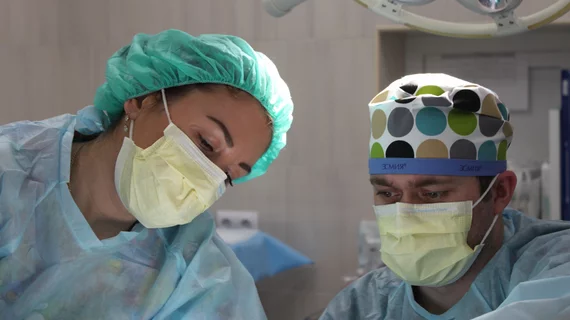An updated look at the latest self-expandable and balloon-expandable TAVR devices
The latest self-expandable (SE) and balloon-expandable (BE) transcatheter aortic valve replacement (TAVR) devices are associated with similar success and mortality rates, according to new findings published in JACC: Cardiovascular Interventions.[1] However, recent BE devices may lower the risk of certain complications, including permanent pacemaker implantation (PPI), compared to recent SE devices.
“Over the past decade, different studies have compared TAVR devices, aiming to investigate the potential benefit of using a specific device type,” wrote first author Giuliano Costa, MD, an interventional cardiologist with AOU Policlinico G. Rodolico – San Marco in Italy, and colleagues. “The most used TAVR platforms are the SE and the BE devices. First- and second-generation devices of these two TAVR platforms have been largely compared, but a head-to-head comparison between the two latest iterations is still lacking.”
Costa et al. aimed to address that need by examining data from more than 2,200 real-world patients who underwent TAVR from September 2017 to January 2022 in North America or Europe. Patients who were not eligible to receive both SE and BE devices were excluded.
The final analysis focused on 683 matched pairs. While one patient from each pair underwent TAVR with an SE Evolut Pro or Pro+ device from Medtronic, the other patient underwent TAVR with a BE Sapien 3 Ultra device from Edwards Lifesciences.
Overall, SE devices were linked to a success rate of 87.4% and BE devices were linked to a success rate of 85.9%. Howevcer, after 30 days, the SE devices had higher rates of PPI (17.9% vs. 10.1%) and disabling stroke (2.3% vs. 0.7%) than BE devices. The rates of 30-day all-cause mortality, nondisabling stroke, myocardial infarction and heart failure hospitalization were all comparable between SE and BE devices.
Post-TAVR echocardiography, meanwhile, confirmed that BE devices had lower paravalvular regurgitation (PVR) rates overall, but moderate-to-severe PVR was similar between the two groups.
“The latest iterations of the most widely used SE and BE transcatheter aortic valve families substantially reaffirmed the lights and shadows previously observed with their predecessors,” the authors wrote. “The higher rate of PPI remains a clear drawback for the SE platform compared with the BE platform.”
The group noted that “further improvements and redesigns of these two platforms” are anticipated in the years ahead. Once these updates are finalized, they said, additional comparisons will be required.

